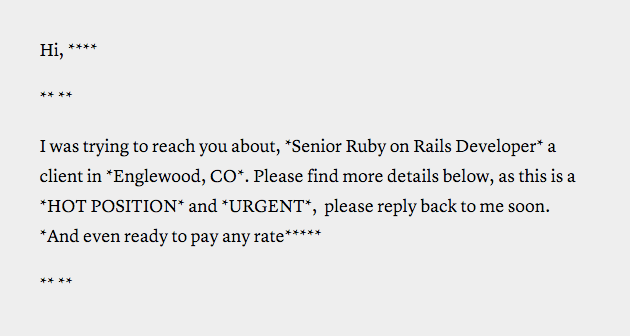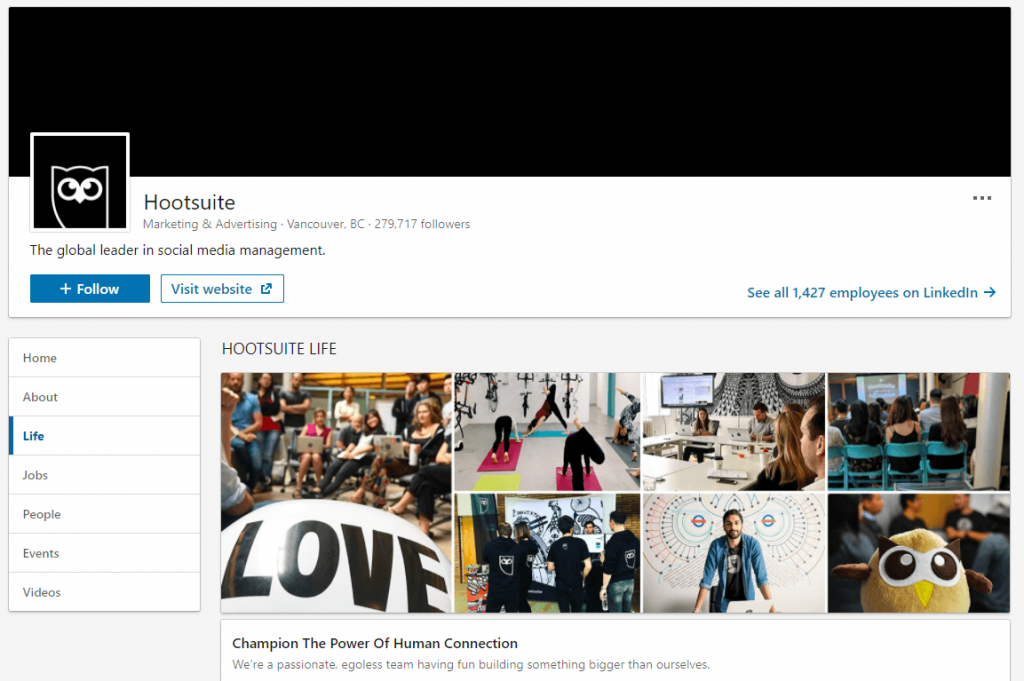74% of recruiters say that it’s a struggle to find qualified candidates (CodinGame 2020 survey). On the flip side, developers are increasingly frustrated with the recruitment process.
Basically, current tech sourcing and recruitment strategies aren’t cutting it. Recruiters are exhausted and developers are irritated.
In this article, we share what we consider is broken in tech sourcing today, what we envision for the future and how we plan to take part.
What’s wrong with developer sourcing today?
Developers are being spammed
As the tension heightens in the tech talent market, the number of messages, calls and emails sent to developers increases – as does they’re exasperation. Unfortunately, recruiters don’t seem to grasp just how often developers are contacted:
“Things were really bad about 2 years ago. I had recently changed jobs, so my scent was out there in the wild. Then my new company announced a major acquisition, which would involve massive restructuring. This was a well known tech company, so the news prompted every local recruiter to contact every known employee of that company. I had to turn my phone off during the workday, as did several of my coworkers.” – Ryan Cook, software engineer and Quora user
What developers find particularly annoying, is when they realize that whoever is reaching out to them hasn’t looked into their developer profile. Developers hate it when recruiters get in touch to offer mismatched opportunities or ask extraneous questions.

In fact, according to last year’s CodinGame survey, “Irrelevant questions” is what developers despise most about the recruitment process (more than salary negotiations or lack of communication).
“[They ask you] lots of questions about your experience and skills that clearly show they haven’t read your profile at all – and that they have no idea what they are talking about. I am a Node-React full-stack dev, why are you asking me if I use Maven and SpringBoot in my daily tasks!?! […] I find this very unprofessional and disappointing.” – Davide de Paolis
Evidently, in a lot of cases, recruiters and programmers just aren’t on the same page.
But why?
Why do recruiters continue to contact developers massively and aggressively? Why don’t headhunters invest time in building up their technical knowhow? Why don’t company leaders review their hiring strategies?
Because times are hard in the tech recruiting world, that’s why!
Recruiters are up against it
A lot of HR professionals feel stuck between ambitious recruitment targets and the lack of available qualified candidates.
Hiring targets are steep because companies desperately need developers. Organizations are getting to the point where their tech recruitments (or lack of) are directly inhibiting economic growth.
Unfortunately, the reality of the tech talent market is such that there aren’t enough developers to go around. Experts estimate that by 2021, there’ll be a shortage of 1.4 million software developers and only 400,000 software developer graduates.
The extremely low unemployment rate for technical and computer occupations means that recruiters are inevitably reaching out to “passive candidates” (developers who are not actively looking for a job). These passive candidates aren’t the easiest candidates to talk to. They’re busy and their online presence (LinkedIn, GitHub, etc.) isn’t necessarily up to date.
What’s more, HR professionals don’t necessarily have access to the tools and resources they need to optimize their sourcing strategies. As part of our 2020 CodinGame Survey, we asked HR pros what tools they used. We found that 44.6% of HR professionals still manage their candidates manually with spreadsheets!
So yes, times are hard. Recruiters are dealing with a tough market context, stretched resources and challenging targets – things that they have no control over.
However, we believe that there are things that HR pros can actively work on and improve. This belief is what fuels our vision for the future.
Our vision for developer sourcing and tech recruiting
Inbound recruitment is key
Based on the way the tech talent market looks today, we’re confident that reverse recruitment and inbound recruiting will be top priority tomorrow.
Reverse recruitment is a recruitment model where companies “apply” to candidates, rather than the other way around. This means that recruiters will need to put extra effort (and authenticity) into the way they present their company and the tech role they’re hiring for.
“YOU contacted me, so YOU should make the company and position appealing for me, not the other way around.” – Davide de Paolis, full-stack developer
Inbound recruiting, on the other hand, is a recruitment strategy where hiring organizations proactively and continually attract candidates.
In short, companies will need to put considerable effort into understanding and attracting developers: what do developers look for in a job? What do they want to know about a company? What excites them?
Employers will also need to develop various marketing and communication strategies (blog posts, behind-the-scenes videos, events, social media, etc.). This will contribute to building an irresistible employer brand.

Diversity and self-education are the future of tech recruitment
One thing that hiring companies have a hold on, and can change in minutes, is their hiring criteria.
Indeed, despite the shortage of tech profiles, many companies continue to apply restrictive hiring criteria. They’re limiting the amount of profiles they have access to!
In our 2020 survey we found that a huge 35% of developers are self-taught. Plus, we took a closer look at our community and found that, among the younger professionals, 28% learned to code through a bootcamp or accelerated training course.
Employers need to get the message: new learning methods are on the rise and tech talent is increasingly diverse.
CodinGame.com is open to developers from any background, worldwide. There’s no question of diploma, gender, race or geographical origin. The result? A community of passionate, curious, talented developers.
“I believe in a new tech talent market, where anyone can decide to become a developer and be hired as such. I believe in bridging the gap between developers and hiring organizations. I believe in communication, understanding, fulfillment and diversity in tech recruitment.” – Aude Barral, CCO at CodinGame
By reviewing their recruitment criteria, hiring companies can add to their talent pool while maintaining their hiring standards. What’s not to love?!
In a nutshell, the future of tech sourcing in recruitment lies in communication, diversity and understanding.
CodinGame Sourcing: taking action
Not only do we have high hopes for the future, we have an operational action plan too.
Introducing CodinGame Sourcing! A brand new technical sourcing platform that carries our vision for the future and bridges the gap between HR and developers.
Powered by accurate CodinGame matching algorithms, our solution provides recruiters with a constant flow of relevant tech profiles from our international community of 2 million developers.
We’ve created this product to support recruiters and represent developers:
- We facilitate transparent and constructive dialogue between programmers and recruiters. For example, we only ever put forward developers who have confirmed their availability to chat in the past 24 hours.
- We encourage diversity by erasing restrictive criteria from job profiles. Recruiters can only enter basic terms of employment. There’s no way to filter developer profiles by age, gender, university degree, etc.
- We put forward talented, passionate and curious individuals that companies wouldn’t necessarily have found or considered otherwise.
- We help both developers and recruiters find the right match.
How exactly does CodinGame Sourcing work?
- First, recruiters create a job profile and describe the “ideal match” for the job: experience, technologies, salary, location, etc.
- Then, our matching algorithm selects the most relevant developer profiles from our community.
- Recruiters head to their inbox to find a bunch of promising, carefully selected, tech profiles and strike up conversations with developers on CodinGame (developers are far more inclined to chat with a recruiter on CodinGame, a platform that they know and love, then a recruiter on saturated professional networks like LinkedIn).
For some, our platform is a way to support and industrialize their strategic sourcing efforts. For others, it’s a new way of sourcing altogether! In any case, we provide our clients with tips and insights, guiding them through a tech-friendly sourcing process.
We’re very excited to release our new sourcing solution and we wholeheartedly trust that CodinGame Sourcing (teamed up with CodinGame Assessment) will drastically improve the recruitment experience for both recruiters and developers.
“Recruiting is often a process filled with fear, stress, and opaqueness, but it doesn’t have to be this way.” – Danny Chrichton for TechCrunch

